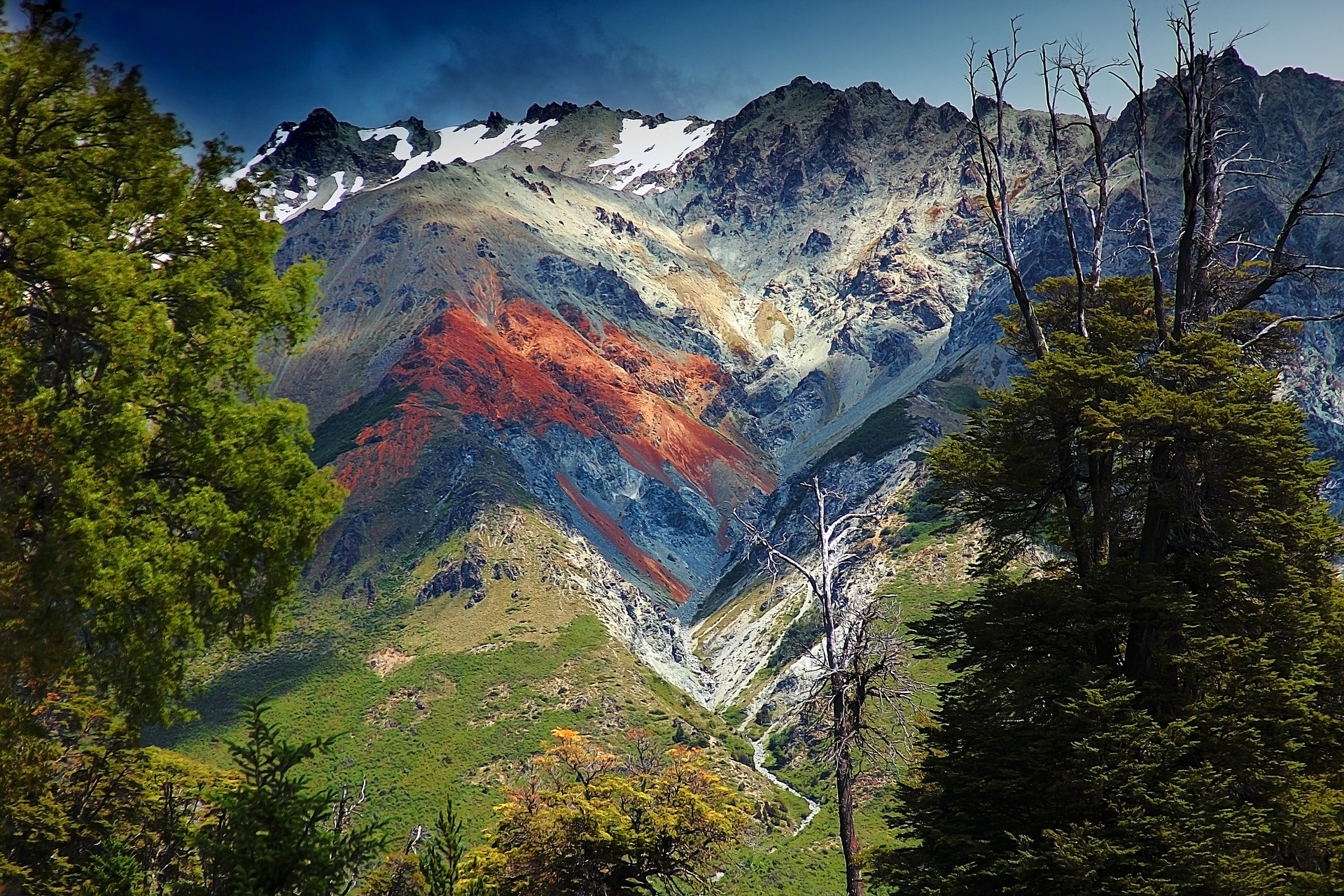Patagonia feels like a mythical land full of wonder and adventure. Known for its breathtaking views and diverse landscapes, you’ll find snow-capped mountains, towering glaciers, roaring waterfalls, and milky blue lakes. The region lies at the southernmost tip of South America and is shared by Chile and Argentina—the Andes Mountains divides the land. With seven major national parks throughout Patagonia, this is the ultimate getaway for nature lovers. This destination still flies a bit under the radar, and chances are you have no idea what to pack. Don’t fear because we’ve got you covered. Keep reading to discover the essential packing guide for Patagonia!
Patagonia is the true embodiment of the saying “If you don’t like the weather, wait five minutes.” The region’s unpredictable climate means you’re likely to experience multiple seasons (sometimes all four) in one day. Since Patagonia is in the southern hemisphere, the seasons are swapped: summer is December-February, fall is March-May, winter is June-August, and spring is September-November. The summer is the best month for traveling due to warmer temperatures. The only downside is the region sees frequent rain showers and heavy winds. The shoulder months of October and March are good options too, as the weather is generally a bit calmer.
Although the summer months are warmer, you’ll still see temperatures fluctuating throughout the day. The key to Patagonia packing is layers. Layers are essential for the nippy mornings that transition to balmy afternoons. Going for waterproof clothing is also necessary. Rainstorms are to be expected, and there’s nothing worse than hiking in sodden clothes.
Hiking Gear
If you’re planning to travel without a tour group, you’ll need various camping items. This list is for those traveling with travel companies that provide accommodations and necessary gear.
Backpack—figure out which size will work best for you based on your size and length of travel; remember you only want to pack the essentials—don’t overdo it
Waterproof rain cover—if your backpack doesn’t come with a waterproof cover, you’ll definitely want to buy this invaluable accessory
Hiking poles—if you’re not an avid hiker or you have joint problems, hiking poles can keep you steady on your feet; look for comfortable, shock-absorbent poles with good grip
Headlamp—although it stays bright pretty late during the summer, it’s always useful to have a headlamp when hiking
Water bottle—bring a bottle that’s easy to fill (it’s safe to refill from the region’s streams)
Towel—a small, microfiber hiking towel is helpful for drying off after sweaty treks and rainy conditions
Hiking Clothes
Short-sleeve shirts—look for lightweight, quick-drying options
Long-sleeve shirts—same as above
Waterproof hiking pants—choose lightweight materials that’ll allow easy movement
Base layers—if you’ll be hiking during colder months, pack base layers to keep your body warm
Comfy pajamas
Fleece—it gets cold even during the summer, and a fleece that’s easy to take on and off is an important addition
Light down jacket—this will keep you warm without weighing you down
Rain jacket—stay dry and protected from the wind and rain; alternatively, you can go for a large poncho as a budget option
Optional: light down vest—this can be used for layering under raincoats (in place of a down jacket) to keep your core warm
Wool socks—keep feet dry and blister-free
Waterproof walking boots—invest in a comfortable pair of waterproof walking boots, and make sure they’re well broken-in before your trip
Flip flops or adventure sandals—after a long day of hiking, it’ll feel good to let your feet breathe
Beanie—stay protected from strong winds
Gloves—your hands will thank you! If you don’t have a waterproof pair, be sure to buy a waterproof shell
Sun hat or cap—these are good options for warmer weather when you want to protect your skin from the sun’s rays; keep in mind that baseball caps may blow off in strong winds
Sunglasses—keep your eyes shielded from the sun
Non-Hiking Clothes
These are items for those staying in lodging who have a place to store their larger luggage. Consider these options if you’re planning on making trips into nearby towns. The region is fairly casual, so there’s no need to bring along fancy items.
Jeans or Khakis
Nice top
Other shoes—however, you can wear your hiking boots out and about
Daypack—a smaller daypack makes it easy to hit the town
Toiletries
Shampoo/Conditioner
Body wash
Deodorant
Toothpaste/Toothbrush
Sunscreen—make sure to pack a decent amount of sunscreen for protection from strong UV rays
Lip balm—the cold and wind will do a number on your lips; look for a balm with UV protection
Bug spray—useful to have in case mosquitoes attack
Tissues
Travel first aid kit
Electronics
Portable USB charger—an absolute must-have that’ll keep you charged and connected when you’re without electricity
Adaptor—necessary for outlet use
Camera—you can’t visit one of the most beautiful regions in the world without a camera to capture the stunning panoramas
Essentials
Passport
Cash/credit card



















Patagonia is chock full of incredible things to do and places to see. From water activities to hiking and wildlife sightings, during your trip to Patagonia, you’ll see it all. If you want to see this incredible region for yourself, book our Patagonia Safari trip today!